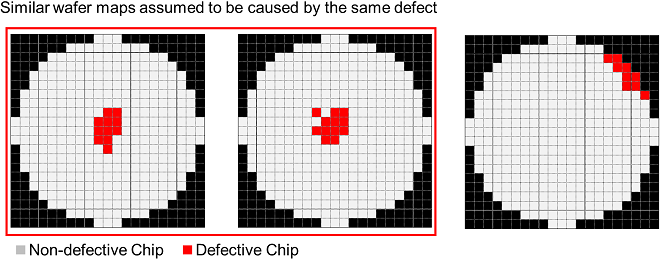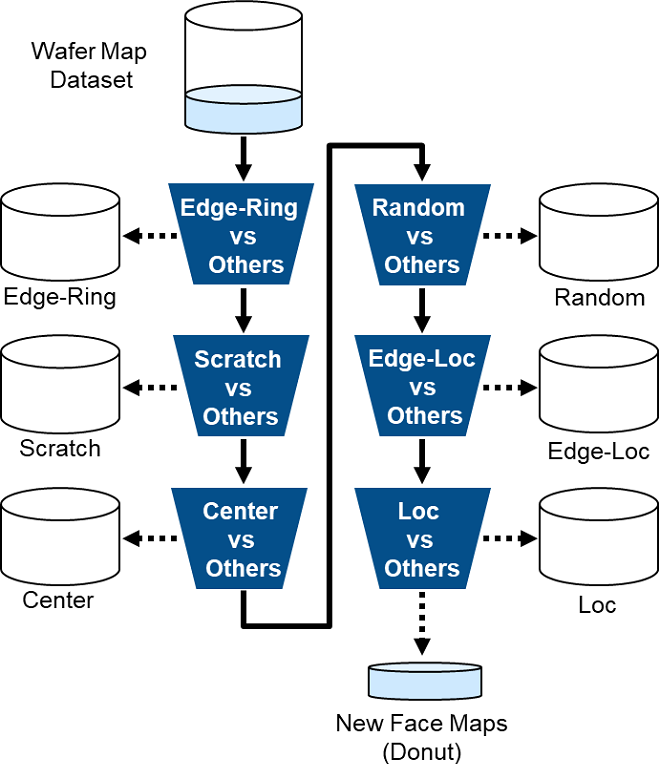Please select your location and preferred language where available.
Wafer Map Classification for Unknown Patterns Using Image Generation Model
December 06, 2023
Importance of wafer map classifications
Wafer map is a data representation showing which chips on a wafer are defective, and wafer map trends have various trends for each cause of defects. Therefore, by analyzing the causes of defects according to wafer map, it is possible to identify the true cause of defects and proceed to countermeasures. For this reason, the accuracy of wafer map classification is important for quality improvement.


Wafer map classification issues
Conventionally, clustering methods are used for classification. However, while this method can classify wafer maps that occur regularly on a daily basis and have a certain number of wafers, it cannot successfully classify wafer maps due to new troubles and wafer maps that occur infrequently(hereinafter referred to as “new-face maps”). Since accurate classification of new face maps leads to early detection and early resolution of quality anomalies, we studied with Mie University a method that can classify new-face maps.
Proposed methods
There are two methods developed in this research. The first is the “binary classifier serial model” that enables detection of new-face maps while accurately classifying known maps, and the second is the “data augmentation by adding pseudo-new-face maps” to improve the accuracy of new-face map detection.
Method 1: Binary classifier serial model
The binary classifier is a machine learning model that classifies certain wafer map patterns from the others. By creating a binary classifier for each known map and connecting them in series, each classifier acts as a filter. When a dataset with a mixture of known maps and new-face maps is input to this serially connected model, the maps that do not respond to any of the binary classifiers remain until the end, where the new-face maps are gathered.


We evaluated the method using the WM-811K dataset with correct labels available on Kaggle[1]. We used the 7 types of wafer maps included in this dataset, set Donut as the new-face map and the others as known maps, and performed accuracy verification.

The results showed that the known maps could be classified with the same accuracy as the conventional method, and that 30% of the remaining maps at the end were actually new-face maps(Donut). From there, we worked on methods to further improve the accuracy.
Method 2: Data augmentation by adding pseudo-new-face maps
In order to have only new-face maps remaining at the end, known maps must be classified with high accuracy. In other words, it is important to improve the accuracy of each binary classifier in the serial model. Therefore, we generated pseudo-new-face maps using a GAN-based generative model and augmented the dataset used for training each binary classifier. By doing so, we were able to improve the accuracy of each binary classifier, and improve the classification accuracy of the new-face maps by nearly 10% while maintaining the classification accuracy of the known maps.


Future outlook
Through this joint research, we have devised a method for detecting new-face maps. This method enables early detection of quality anomalies and is expected to contribute to quality stabilization. We will continue to verify this method with the aim of putting it into practical use.
The method devised in this joint research was presented at the AEC/APC Symposium Asia 2023.
Reference
[1] Kaggle, WM-811K wafer map

